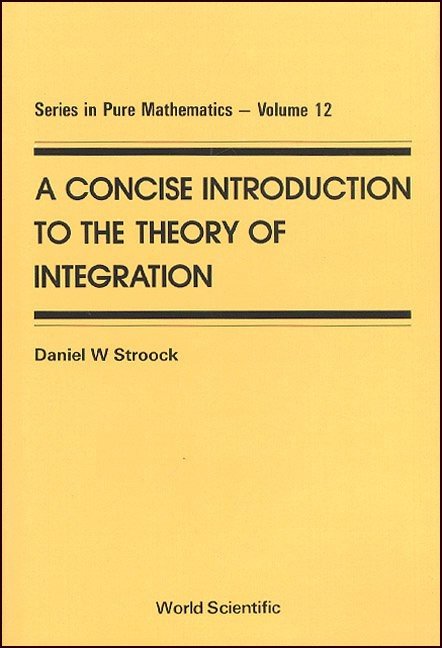System Upgrade on Tue, May 28th, 2024 at 2am (EDT)
Existing users will be able to log into the site and access content. However, E-commerce and registration of new users may not be available for up to 12 hours.For online purchase, please visit us again. Contact us at customercare@wspc.com for any enquiries.
The choice of topics included in this book, as well as the presentation of those topics, has been guided by the author's experience in teaching this material to classes consisting of advanced graduate students who are not concentrating in mathematics. This book contains an introduction to the modern theory of integration with a strong emphasis on the case of LEBESGUE's measure for (RN and eye toward applications to real analysis and probability theory. Following a brief review of the classical RIEMANN theory in Chapter I, the details of LEBESGUE's construction are given in Chapter II, which also contains a derivation of the transformation properties of LEBESGUE's measure under linear maps. Chapter III is devoted to LEBESGUE's theory of integration of real-valued functions on a general measure space. Besides the basic convergence theorems, this chapter introduces product measures and FUBINI's Theorem. In Chapter IV, various topics having to do with the transformation properties of measures are derived. These include: the representation of general integrals in terms of RIEMANN integrals with respect to the distribution function, polar coordinates, JACOBI's transformation formula and finally the introduction of surface measure followed by a proof of the Divergence Theorem. A few of the basic inequalitites of measure theory are derived in Chapter V. In particular, the inequalities of JENSEN, MINKOWSKI and HÖLDER are presented. Finally, Chapter VI starts with the DANIELL integral and its applications to the CARATHÉODORY Extension and RIESZ Representation Theorems. It closes with VON NEUMANN's derivation of the RADON-NIKODYM Theorem.
Readership: Mathematicians, physicists and engineers.























